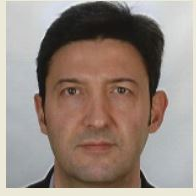Multispectral Image Acquisition, Processing and Analysis
A special issue of Remote Sensing (ISSN 2072-4292). This special issue belongs to the section "Remote Sensing Image Processing".
Deadline for manuscript submissions: closed (30 June 2019) | Viewed by 56330
Special Issue Editors
Interests: blind estimation of degradation characteristics (noise, PSF); blind restoration of multicomponent images; multimodal image correction; multicomponent image compression; multi-channel adaptive processing of signals and images; unsupervised machine learning and deep learning; multi-mode remote sensing data processing; remote sensing
Special Issues, Collections and Topics in MDPI journals
Interests: multichannel remote sensing; image processing
Special Issues, Collections and Topics in MDPI journals
Interests: remote sensing image processing and analysis
Special Issues, Collections and Topics in MDPI journals
Special Issue Information
Dear Colleagues,
Due to the continually-improving advances in lightweight and less expensive versions of multispectral sensors and remote sensing platform technology in recent years, the end-users are provided with a multitude of timely observational capabilities for a better sensing and monitoring of the Earth surface.
To benefit from the full potential of these ever advancing productive systems in a more flexible and smart way in many applied fields, we need to further continue to improve our analysis and processing capabilities accordingly. Joint efforts for fully-automated, easy-to-use and efficient systems are a key direction to the facilitated and matured operational use of remote sensing.
This Special Issue is thus intended to cover the last advances in the following primary topics of interest (but not limited to) related to Multispectral Image Acquisition, Processing and Analysis:
- State-of-the-art and emerging multispectral technologies, including new platforms (satellite, aerial, Unmanned Aerial Vehicles) and sensors with:
- spatial, spectral, temporal sensing abilities
- georeferencing and navigation abilities
- cooperative sensing
- Advanced multispectral image/data analysis and processing:
- lossless/lossy compression, denoising,
- geometrical, registration, georeferencing processing,
- feature extraction, classification, object recognition, change detection, domain adaptation
- Multisource data fusion
- optical-radar fusion, pan-sharpening
- field sensing
- crowd sensing
A wide spectrum of recent and latest emerging applications highlighting Multispectral Image Acquisition, Processing and Analysis are obviously targeted including biodiversity assessment, vegetation and environmental monitoring (identification of diversity in grassland species, invasive plants, biomass estimation, wetlands), precision agriculture in agricultural ecosystems and crop management, water resource and quality management in nearshore coastal (mapping near-surface water constituents, benthic habitats) and inland waters (analysis and surveying of rivers and lakes), sustainable forestry and agroforestry (forest preservation and mapping of forest species, wildfire detection), mapping archaeological areas, urban development and management, and hazard monitoring.
Dr. Benoit Vozel
Prof. Vladimir Lukin
Dr. Yakoub Bazi
Guest Editors
Manuscript Submission Information
Manuscripts should be submitted online at www.mdpi.com by registering and logging in to this website. Once you are registered, click here to go to the submission form. Manuscripts can be submitted until the deadline. All submissions that pass pre-check are peer-reviewed. Accepted papers will be published continuously in the journal (as soon as accepted) and will be listed together on the special issue website. Research articles, review articles as well as short communications are invited. For planned papers, a title and short abstract (about 100 words) can be sent to the Editorial Office for announcement on this website.
Submitted manuscripts should not have been published previously, nor be under consideration for publication elsewhere (except conference proceedings papers). All manuscripts are thoroughly refereed through a single-blind peer-review process. A guide for authors and other relevant information for submission of manuscripts is available on the Instructions for Authors page. Remote Sensing is an international peer-reviewed open access semimonthly journal published by MDPI.
Please visit the Instructions for Authors page before submitting a manuscript. The Article Processing Charge (APC) for publication in this open access journal is 2700 CHF (Swiss Francs). Submitted papers should be well formatted and use good English. Authors may use MDPI's English editing service prior to publication or during author revisions.
Keywords
- Imaging sensors and platforms
- Cooperative sensing
- Multispectral data analysis
- Multispectral data processing
- Multisource data fusion
- Deep learning strategies







